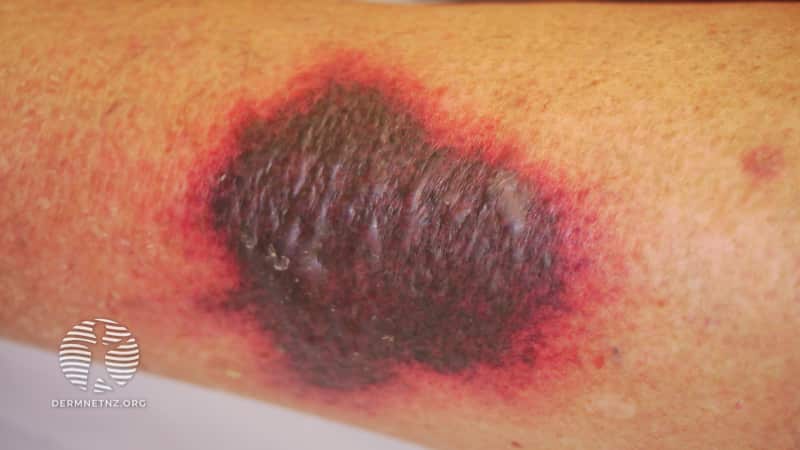Main menu
Common skin conditions

NEWS
Join DermNet PRO
Read more
Quick links
Author: Dr Ian Coulson, Consultant Dermatologist and Editor-in-Chief, 2022.
Edited by the DermNet content department

This 75-year-old woman has developed a painful haemorrhagic lesion in the last 2 days on her lateral calf. She has coronary artery disease and atrial fibrillation.
She has been on a beta-blocker as well as warfarin for several months. Her INR control has been very erratic.
This is coumarin necrosis. It most frequently occurs shortly after the introduction of a coumarin anticoagulant (eg, warfarin).
Natural anticoagulants reduce in concentration before natural pro-coagulants, so that there is the potential for a short period of relative thrombophilia and this can result in dermal vessel thrombosis and subsequent skin necrosis.
Dermal vessel thrombosis and skin necrosis has been reported in persons with protein S and C deficiency. It is occasionally seen later during anticoagulant treatment particularly if there has been erratic warfarin control.
It can be managed by initiation of heparin, withdrawal of warfarin, and then the use of a new oral anticoagulant which directly inhibits either thrombin or factor Xa. Established necrosis may require devitalised tissue debridement.